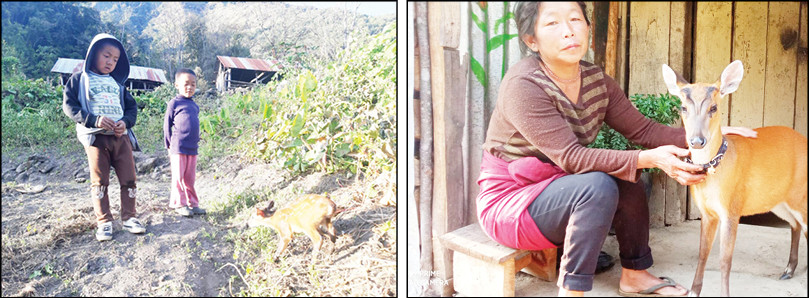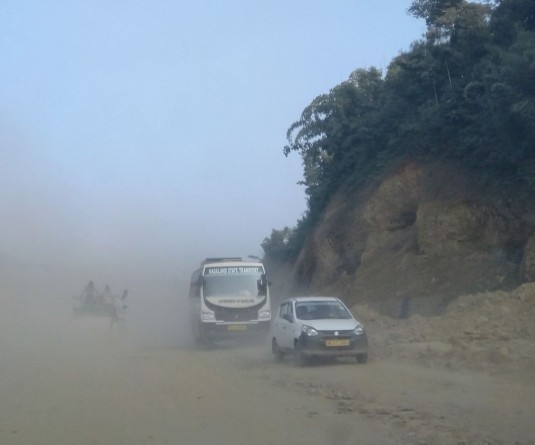(Left) 5-year-old Medovizo Meyase and 6-year-old Rokovizo Terhüja with Ranger. (Right) Ranger and his caretaker Rotna (Photo Courtesy: Vemezolie Terhüja)

Vishü Rita Krocha
Kohima | October 16
In November 2020, 5-year-old Medovizo Meyase and 6-year-old Rokovizo Terhüja were pleasantly surprised when a fawn appeared in a cowshed in Dzüleke. The duo was playing in the vicinity while the elders were collecting squash. The two boys were screaming happily when the fawn came running and they instantaneously started playing him.
Medovizo Meyase is currently studying in Class 1 at Government Primary School, Dzüleke while Rokovizo Terhüja is a student of Baptist High, Kohima and is in Class II. “I was happy and excited to see a deer coming over to us”, Medovizo Meyase relates to The Morung Express in an exclusive interview. While he would play with the deer along with other children, he said, there were times he would just go and watch Ranger— a name they had given for the fawn.
“We thought the deer would run away but he followed the children,” said Depielie Meyase, a farmer in Dzüleke. That was when Vemezolie Terhüja, a resident of the hamlet decided to adopt the fawn. Ranger belongs to a deer species called ‘Muntiacus muntjak’, which is more commonly known as ‘barking deer’ and is native to South and Southeast Asia.
“The mother deer must have been eaten by wild animals and he must have got lost. When the deer came, his hooves had not even developed,” Meyase recollects. Ever since, Rotna and her husband, a Nepali couple have been taking care of the fawn by initially feeding it with fresh milk from a feeding bottle.
Talking about the deer’s growth in the last 10 months, he also shared that the deer started eating soft grass after one month. Following a couple of months, Ranger started venturing out by himself. He would go into the wild for one or two hours but still come back to the farm, where he has clearly made his home.
Ranger has come to that stage where he goes around the village and has now grown accustomed to the company of the residents of Dzüleke. “He is very close with human beings and also plays with cats and dogs,” Meyase said. There was also an instance where visitors to Dzüleke tried to catch the deer. However, the incident was avoided after residents called out for Ranger. “He is more or less like a dog,” he shares.
Nowadays, Ranger spends more time in the wild but it is rare for him not to return back to the shed at night. Meyase reasons that this must be because it is the mating season for deers. However, in the meantime, they are also contemplating of building a fence for Ranger in the locality. If released in the wild, they are also concerned that it will become a prey to other wild animals as Ranger has grown up in a different environment. The other option is to donate it to the Zoological Park, he says, but at the same time, he feels that it could mean ‘captivity.’
Having a deer around in the village, he notes, could be an attraction even if in a very small way. Apart from being known for its pristine beauty and rich flora and fauna, Dzüleke is home to a variety of wildlife such as the Barking Deer, Civet Cat, Macaque and Clouded Leopard. Farmers have also encountered wild boars, deer, and bear while farming.






